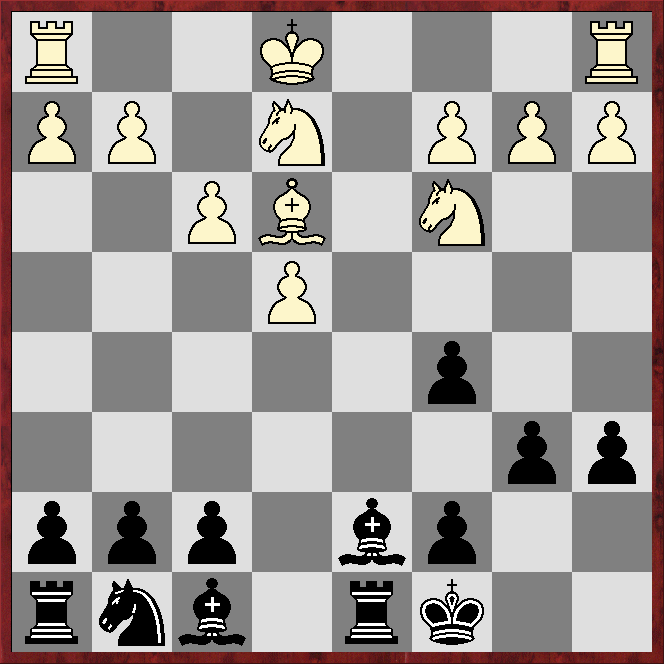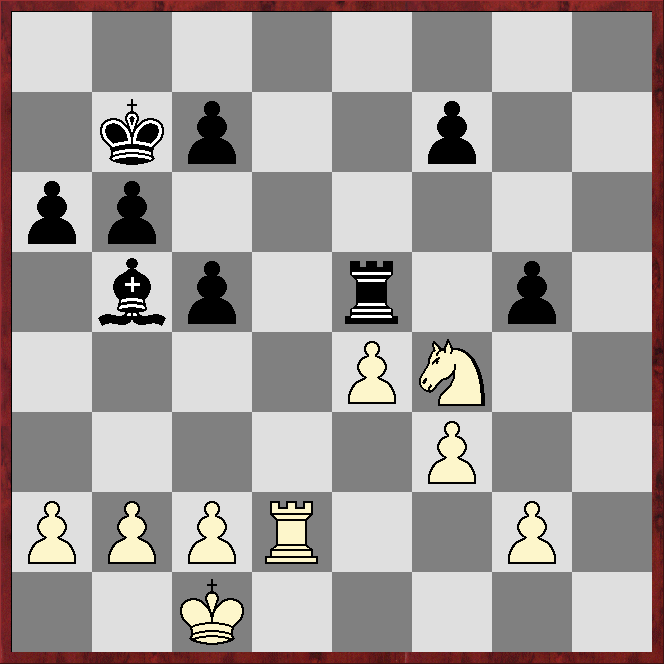 |
| The tournament hall before round one |
PLAYED this afternoon.
Spanton (1860) - Annika Fröwis (2090)
Spanish Exchange
1.e4 e5 2.Nf3 Nc6 3.Bb5 a6 4.Bxc6 dxc6 5.d4 exd4 6.Qxd4 Qxd4 7.Nxd4 Bd7 8.Be3 0-0-0 9.Nc3 c5 10.Nde2 b6 11.f3
*****
*****
*****
*****
11...Ne7!?
This move, which is the top choice of Komodo12.1.1, may be a novelty. Stockfish14.1 mildly prefers 11...f5!?
12.0-0-0 Ng6 13.Nd5 h6!?
The game had transposed into a known position in which a 2232 played 13...Kb7. The main idea of the text, presumably, is to prevent Bg5 and so make ...Nh4 possible.
14.h4
14.g3?! also stops ...Nh4 but weakens the white kingside pawn-structure.
14...Kb7 15.Nf4 Ne5 16.Nd3 Nxd3+
This is slightly better, according to the engines, than 16...Nc4!? 17Bf4.
17.Rxd3 Bb5 18.Rd2 Bd6 19.Rhd1 Rhe8
*****
*****
*****
*****
As is normal in the Exchange Variation of the Spanish, White has the better pawn-structure and Black has the bishop-pair. Early on in such games the engines normally reckon Black is slightly better, or at least give Black the better side of equals. But here White's next move ensures White has the advantage, however Black replies.
As is normal in the Exchange Variation of the Spanish, White has the better pawn-structure and Black has the bishop-pair. Early on in such games the engines normally reckon Black is slightly better, or at least give Black the better side of equals. But here White's next move ensures White has the advantage, however Black replies.
20.Bf4
*****
*****
*****
*****
20...Bxf4
This is best, according to the engines. 20...Bc6 21.Bxd6 cxd6?! 22.Ne3 undoubles Black's c pawns but seemingly leaves Black unable to save the newly created d pawn.
21.Nxf4 Rxd2 22.Rxd2
Black no longer has the bishop-pair as compensation for her inferior pawn-structure, but has rook-and-bishop versus the usually inferior combination of rook-and-knight. The engines reckon White is slightly better.
22...g6 23.Nd5 Re5 24.Nf4 g5!?
This is the engines' top choice. On 24...Re8 I would have had to either make a tacit draw offer with 25.Nd5, or found some way of continuing the game. The engines reckon 25.h5!? is strong.
25.hxg5 hxg5
*****
*****
*****
*****
26.Rd5!
This is Stockfish14.1's choice, and is best, I believe, although Komodo12.1.1 for some time narrowly prefers 26.Nd3.
26...Rxd5
Forced.
27.Nxd5
Komodo12.1.1 reckons Black is more-or-less equal, but Stockfish14.1's verdict of White having the upper hand is almost certainly nearer the mark.
27...a5 28.Ne3 Bd7 29.Kd2 b5 30.Kd3 Be6 31.a3
With white pawns on a3, b2 and c3, Black cannot create a passed pawn with her queenside pawn majority.
31...c6 32.g3
But clearly White can slowly create a passer on the kingside.
32...Kc7 33.f4 gxf4 34.gxf4 Kd6 35.e5+ Kd7 36.Ke4
White has made considerable progress, and by now both engines recognise the white position as winning.
36...Ba2 37.f5
Also very strong, and possibly simpler, is 37.b3.
37...a4 38.c3 Bb1+ 39.Kf4 Ke7 40.Ng4 Bc2 41.Nf6 Bb1 42.Ne4 c4 43.Nc5 f6!?
*****
*****
*****
*****
44.Ne4!?
Forcing Black to capture on e5 is best, according to the engines, along with 44.exf6+, which they come to rate equally highly. The 'obvious' 44.e6 is probably also winning, but blocking the position makes it harder for White to progress, despite having knight versus bishop.
44...fxe5+ 45.Kxe5 Bc2 46.Ng5 Kd7 47.Ne6 Bd1 48.f6 Bh5 49.Nc5+ Ke8 50.Nb7 Kd7 51.Nd6 Bf3 52.Nf5 Bd5 53.Ne7 Bf7
Not 53...Be6? 54.Nxc6 etc.
54.Kf5 Kd6 55.Ng6 Be6+ 56.Kf4 Bd5 57.Nh8 Ke6 58.Kg5 Ke5
*****
*****
*****
*****
59.f7??
Throwing away the win and almost losing. Best is 59.Ng6+, according to the engines, and if 59...Ke4, going for counterplay against the white queenside, then 60.Ne7 Bf7 61.Nxc6 is convincing enough.
59....Bxf7 60.Nxf7+ Ke4 61.Kf6 Kd3 62.Ne5+ Kc2 63.Nxc6 Kxb2 64.Nd4 Kxc3
64...Kxa3 does not change the outcome, as long as after 65.Nxb5+ Kb3 66.Ke5 a3 67.Nxa3 Black plays 67...Kxc3 and not 67...Kxa3?? 68.Kd5 Kb3 69.Kd4 etc.
65.Nxb5+ Kb2 66.Ke5 c3 67.Nxc3 Kxc3
The game is drawn because, although Black wins a pawn, her remaining pawn will be a rook's pawn.
68.Ke4 Kb3 69.Kd3 Kxa3 70.Kc3 Ka2 71.Kc2 a3 72.Kc1 ½–½






No comments:
Post a Comment